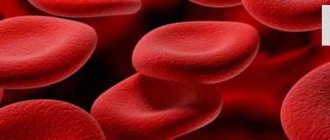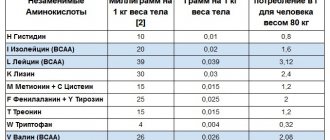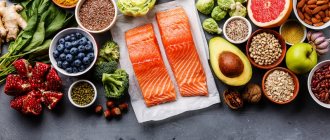Why is magnesium needed?
Magnesium is required by our body due to the fact that:
- Without magnesium, calcium cannot be absorbed;
- magnesium, calcium and phosphorus take care of strong bones
- necessary for the metabolism of glucose, amino acids, fats, transport of nutrients, required for energy production
- participates in protein synthesis
- plays an important role in the transmission of nerve signals
- essential for a healthy cardiovascular system
- necessary for good functioning of the genitourinary system, prevents the formation of kidney stones
- has an anti-stress effect
- helps with overwork, chronic fatigue
- reduces blood cholesterol levels
- smoothes the symptoms of PMS and menopause in women
What foods generally contain magnesium?
Magnesium deserves the title of a “sports” element. It is responsible for the growth of muscle mass, supports the heart muscle, stimulates protein synthesis in the body, participates in metabolic processes, stimulates intestinal function, removes cholesterol and regulates the transmission of nerve impulses.
Products containing magnesium should be consumed daily. A person's need for magnesium is approximately 400-500 mg per day.
Magnesium is found in a wide variety of foods on our table:
- oil (sesame, flaxseed, peanut, ghee); — cheese (Dutch, Poshekhonsky, goat, blue cheese); - yogurt (1.5 - 3.2%); - cottage cheese (low-fat and low-fat, curd cheese); - condensed milk; - bitter chocolate; - meat (almost all types); — fish (halibut, sturgeon, haddock, perch, cod, saury); - duck eggs; - cereals (rolled oats, chickpeas, peas, buckwheat, brown rice, lentils); - fruits (cherry, kiwi, pineapple, feijoa, raspberry, pear, peach, persimmon); — many varieties of tea (for example: “Ivan-Chai”) and juices; - ginger, mustard, vanilla.
Drinking water is enriched with various minerals: the main percentage is sodium, a small percentage is calcium, potassium and magnesium.
Sea salt contains magnesium, the highest percentage of mineral in Dead Sea sea salt.
Many or few
If you suffer from insomnia, you have a hard time getting up in the morning, are irritated and hate even the slightest noise. You have a headache, flickering spots appear before your eyes, you feel dizzy, lose your balance, have high blood pressure, and your heart is beating loudly - know that all these signs indicate a lack of magnesium in the body. Or about its poor absorption and rapid losses. The body can quickly consume magnesium during pregnancy and toxicosis, feeding a child, and during treatment with diuretics.
Too much magnesium means the following symptoms:
- drowsiness, loss of coordination, speech
- lethargy
- slow heart rate
- nausea, vomiting, diarrhea
- dry mucous membranes (especially the oral cavity)
How our health suffers from magnesium deficiency
Imagine: all we need is just one tablespoon of an essential macronutrient. This is the amount it is found in our body. As a reminder, we cannot synthesize this component. It comes exclusively from food or with special medications.
A decrease in Mg levels can lead to heart rhythm disturbances, insomnia, causeless melancholy, fatigue, weakness, and convulsions. Long-term deficiency can be associated with a number of diseases. Among them:
- high blood pressure (hypertension);
- the presence of malignant neoplasms;
- diabetes;
- stroke and heart attack.
We have already described the symptoms of magnesium deficiency in the body. In children, this condition contributes to the development of autism, attention deficit hyperactivity disorder, and dyslexia.
The consequences of Mg deficiency can be unpredictable. This includes the risk of coronary heart disease, which ceases to receive the element necessary for normal functioning in full, and the development of schizophrenia, generalized anxiety, and other mental disorders.
The effect exerted by the element is great and is aimed at completely different systems. Forgetting about it, we risk being left alone with many serious diseases:
- Impaired cerebral circulation.
- Reduced resistance to infections.
- Oncopathologies.
- Atherosclerosis of blood vessels.
We looked at the role of magnesium in the human body, its main functions, symptoms of deficiency - signs that are found in most modern people. The lack of this substance leads to the fact that we cannot resist stress, our immunity weakens, and we do not have enough strength to work. Maybe you just need to reconsider your diet? Experts say: this is one of the surest ways to get rid of fatigue, apathy, cramps, rapid heartbeat and suffocation.
But there is also a problem diametrically opposite to the one we described. It is associated with excess of the norm and manifests itself with a sharp increase in the level of Mg in the blood.
Foods that contain magnesium
We have selected 10 foods that contain the most magnesium. Some were a pleasant surprise...
Article on the topic
Healthy bones on fasting days: plant sources of calcium High magnesium content in the grain shell. Therefore, cereals and bread made from whole grain flour are so important for a healthy diet. In addition, be sure to eat green leafy vegetables (spinach, salads, chard, etc.), drink cocoa and chew nuts. So, 10 foods with the highest magnesium content:
Wheat bran – 590 mg
Cocoa – 440 mg (this is in dry powder. A dark chocolate bar contains about 200 mg of magnesium)
Cashew – 270 mg
Buckwheat – 258 mg
Soy – 249 mg
Almonds – 170 mg
Rice (unpolished) - 157 mg (for comparison: polished 64 mg magnesium)
Oatmeal – 139 mg
Spinach – 58 mg
Chicken egg – 47 mg
What else contains magnesium →
Do you know how much magnesium you need?
Divide the mg of magnesium contained in the food by the daily requirement according to your gender and age.
| Age and gender | Daily norm | Permissible limit |
| Child 1-3 years old | 90 mg/day | 140 mg/day |
| Child 4-8 years old | 140 mg/day | 250 mg/day |
| Child 9-13 years old | 250 mg/day | 600 mg/day |
| Girl 14-18 years old | 350 mg/day | 700 mg/day |
| Young man 14-18 years old | 420 mg/day | 750 mg/day |
| Male 19-30 years old | 400 mg/day | 730 mg/day |
| Man over 30 years old | 450 mg/day | 800 mg/day |
| Woman 19-30 years old | 320 mg/day | 660 mg/day |
| Woman over 30 years old | 330 mg/day | 670 mg/day |
| Pregnant woman 19-30 years old | 420 mg/day | 700 mg/day |
| Pregnant woman over 30 years old | 430 mg/day | 710 mg/day |
| Breastfeeding woman 19-30 years old | 410 mg/day | 650 mg/day |
| Breastfeeding woman over 30 years old | 420 mg/day | 660 mg/day |
For example, 540 (magnesium content per 100 g of sesame seeds) / 400 (average daily magnesium requirement for an adult).
It turns out that 100 grams of sesame contains 135% of the daily value of magnesium. 100 grams of pine nuts contain 62.75% of the daily value of magnesium. 100 grams of seaweed contains 42.5% of the daily value of magnesium.
If you are a woman over 30 years old, then to meet your daily requirement for magnesium, you just need to add to your daily diet:
- 100 grams of seaweed (170 mg of magnesium), and seaweed is also an excellent source of other useful substances, and not only iodine, but calcium, iron, folic and pantothenic acids. Sea kale is considered a dietary product and contains only 25 kcal per 100 grams of product.
- 50 grams of pumpkin seeds (296 mg of magnesium). Pumpkin seeds are simply a storehouse of vitamins, minerals and unsaturated fatty acids we need. Pumpkin seeds are considered one of the best sources of magnesium and zinc.
Just 100 grams of cabbage and 50 grams of pumpkin seeds provide 466 mg of magnesium per day.
How is it best absorbed?
Article on the topic
All the salt is in the iron. How to eat to increase hemoglobin levels Be sure to take calcium to absorb magnesium. Or eat foods with a high content of it. A lot of calcium is found not only in milk, but also in sesame seeds, spinach, orange and green fruits and vegetables.
You will get the maximum amount of magnesium from fresh vegetables, but if you want to cook them, do not pour out the broth, which has absorbed a large amount of the element.
Lean on the beans
We get magnesium, like other microelements, through food and water. There is a lot of it in spinach and asparagus - products that are quite exotic for us, but not at all inaccessible. This useful element is found in wheat bran, nuts and seeds, beans, green apples and salads, and green sweet peppers.
It's also a good idea to take magnesium supplements, especially those that combine it with orotic acid, a natural component involved in metabolism. They are necessary for beginners and experienced hypertensive patients to reduce the risk of stroke, people with mitral valve prolapse, after a myocardial infarction, those who are exposed to stress, and those who use diuretics (they remove magnesium from the body). And, of course, to all people with magnesium deficiency, even if they feel healthy.
| Products | Magnesium content (mg/100 g) |
| Wheat bran | 611 |
| Pumpkin seeds | 534 |
| Sesame seed | 351 |
| Almond | 304 |
| Pine nuts | 234 |
| Peanut | 185 |
| Walnuts | 169 |
| Spinach | 87 |
| Beans | 63 |
| Dried dates | 59 |
| Sunflower seeds | 58 |
You will get the maximum amount of magnesium from fresh vegetables, but if you want to cook them, do not pour out the broth, which has absorbed a large amount of the element.
Excess magnesium in the body: symptoms
This condition manifests itself as follows:
- Drowsiness and lethargy occur.
- Muscle weakness appears.
- Coordination is impaired.
- Another common symptom is dry skin and mucous membranes.
- The skin becomes hot to the touch, it seems that the temperature has risen.
- Diarrhea and lightheadedness may begin, leading to nausea.
All of these symptoms indicate an excess of magnesium in the body. This is dangerous for internal organs. The kidneys are the first to be affected and stones may appear in them. The thyroid gland begins to work with double activity, muscle atrophy appears, the early stage is characterized by severe weakness, indifference to everything, and decreased blood pressure.
Only a doctor who can prescribe the correct treatment can help. In particularly advanced cases, with the development of renal failure, hemodialysis cannot be avoided.
How to avoid the described risks? Start eating right. Next, we will talk about foods that will help prevent Mg deficiency and improve health.
Provision of the population with potassium and magnesium
In different countries, the average consumption of potassium is less than 3000 mg/day, and magnesium is 350 mg/day, i.e. lower than recommended by WHO [8]. The average per capita consumption of potassium by the population of the Republic of Sakha (Yakutia) is 2107 mg, and magnesium - 224 mg. In the Sverdlovsk region, insufficient magnesium intake was found in 55% of schoolchildren and 78.8% of industrial workers (with potassium deficiency in 40.4%) [9, 10].
The average potassium intake by adult men in the Stavropol Territory is close to the norm and higher than that of women [11]. Magnesium consumption by persons with cardiovascular diseases (CVD) and obesity in the Moscow region was 326.5 mg, potassium - 3144 mg [12]. Among patients with metabolic syndrome and intestinal dysbiosis, the content of magnesium and potassium in the diet of women is noticeably lower than that of men (304 mg versus 424 mg and 2521 mg versus 3280 mg) [13].
The share of magnesium of aqueous origin in the diets of the population of Primorye is 2.0–7.5%. The use of household water purifiers without a mineralization unit increases the risk of developing magnesium deficiency [14].
Magnesium deficiency occurs in 2.5–15% of cases and is difficult to diagnose because the level in the blood does not reflect the content of intracellular magnesium. The causes of magnesium deficiency are a decrease in its content in food plants, the use of refined and highly processed foods, the presence of chronic diseases, and drug therapy [15].
Hypomagnesemia is diagnosed when the concentration of magnesium in the blood serum is <0.7 mmol/l, with a norm of 0.7–1 mmol/l [16]. In 2117 pregnant women over 18 years of age with clinical manifestations of magnesium deficiency (hypertonicity of the uterus, leg cramps, preeclampsia, neurasthenia), there was a lack of it in the diet in 78.4% of cases, and a reduced level in the blood in 80.9% [17].
Preparations with vitamin B6
Dietary magnesium deficiency has been a concern since the 1950s. In 1995, the World Health Organization recognized magnesium deficiency as an important health risk, stating that since the beginning of the 20th century, consumption of the mineral has more than halved - from 500 mg per day to 175-225 mg³.
One of the reasons is the decrease in magnesium content in foods. Over the past decades, the amount of mineral in vegetables, fruits and meat has fallen by 20-30% due to industrial cultivation. In addition, fast food, baked goods and other refined foods are practically devoid of magnesium.
WHO reminds that long-term magnesium deficiency may be associated with hypertension, atherosclerosis and cancer, diabetes, myocardial infarction and cerebral stroke. In children, the lack of the proper amount of the mineral is a risk factor for the development of autism, dyslexia, and deviant behavior.
If you experience symptoms of a deficiency of this element, you can take magnesium supplements. The best are those that also contain vitamin B6 - it improves the absorption of magnesium from the gastrointestinal tract, facilitating its penetration into cells.
***
New Fitseven materials, 5 times a week - in telegram:
- fit7seven
Magnesium is one of the most important substances for the proper functioning of the body. Deficiency of this mineral leads to various health problems. WHO recommends eating magnesium-rich foods every day, including chia seeds, various nuts, pseudograins and brown rice.
Scientific sources:
- Magnesium: An Invisible Deficiency That Could Be Harming Your Health, source
- Magnesium: WebMD, Overview Information, source
- Magnesium: Recommended Dietary Allowances, source
- WHO: Calcium and Magnesium in Drinking-water Public health significance, pdf










